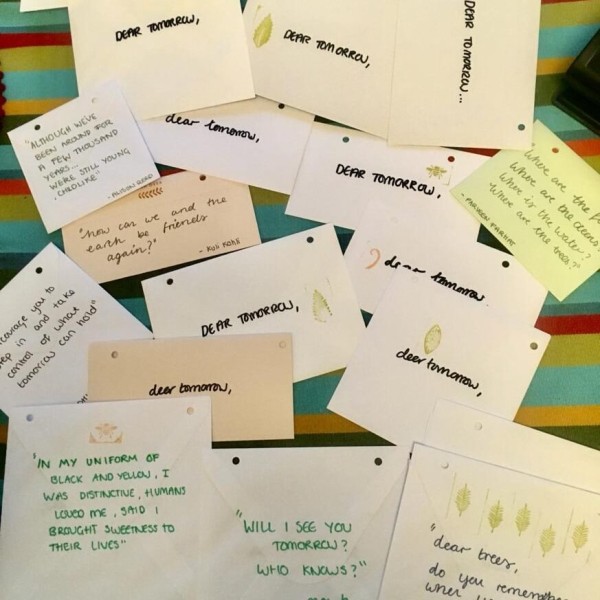
December 7th 2017
A Natural Dyeing Workshop with Sue Chand
We recently invited artist [Sue Chand](https://suechand.co.uk/) to share her traditional dyeing techniques with our team in a morning workshop. [Sue](https://suechand.co.uk/) is an artist that uses traditional methods of making to create works of natural fibre and paper, alongside this she uses natural dyes to create breathtaking colour on materials such as hand-spun natural yarn.
During our workshop some wonderful experiments were done with colourful natural dyes created from plants, many of which can be found locally. Sue's workshop was an inspirational experience that gave us a great insight into the wealth of colour that can be created from natural sources and today we are going to share the experience with you.!Sue teaching everyone how to create a dye bath Sue teaching everyone how to create a dye bath[/caption] During the session Sue showed us examples of wool and cotton that she had already dyed with a variety of natural dyes, in fact she had a whole folder of examples. This show-and-tell exercise really bought to light for the huge range of natural materials/ plants that can be used to dye fabric and fibres, and made everyone very hopeful about what we were going to create in the workshop. !One of the dye baths simmering in the second hour One of the dye baths simmering in the second hour[/caption] We first spent time preparing the material that we were going to dye, soaking & submerging different fibres in water baths. Whilst some of us were doing this, the rest of us set up some gas stoves, ready to simmer water over to add the dyestuffs to. For some of the dye baths we used a mordant (a substance that fixes a dye to a material) and some we didn't, we added the dyestuffs (and mordants in some cases) to the simmering water, creating dye baths and left them to simmer. We created five different dye baths, including onion skins, madder, turmeric, logwood and henna. !Sue, with fellow artists Kanj Nicholas and Clare Wassermann, putting the material that was to be dyed into the dye baths Sue, with fellow artists Kanj Nicholas and Clare Wassermann, putting the material that was to be dyed into the dye baths[/caption] A big part of preparing the dye baths was waiting as they simmered, in this case for an hour. You have to be very patient to dye natural fabrics, but, as always at Boundary Way, time passed quickly in good company. Once our hour was up we took the material & fibre samples that we were going to dye and placed them into the different dye baths, stirring them in to make sure they were fully submerged. Now, again, we observed the simmering pots and waited to see the results of our hard work. !Sue checking the progress of a sample. Sue checking the progress of a sample.[/caption] Sue took all of the samples home, drained them and created a detailed sample card for each person who took part in the workshop, labelling each sample material and the dye used on it. It was so amazing to receive such a beautiful array of dyed fibre from our hard work and we couldn't believe the variety in colour, from deep purples from the logwood bath to bright yellows from the tumeric. The results were outstanding and the amazing vibrancy of the natural colours far surpassed everyone's expectations. !One of the finished Sample Cards One of the finished Sample Cards[/caption] We really enjoyed the brilliant and interesting session that Sue Chand led for us and we hope that in the future you will all have the opportunity to learn from Sue at Boundary Way. This year, we have had such a successful array of creative and nature based workshops and can't wait to see what the future holds. Let's just say there are hopefully plenty more workshops to come! You can visit Sue's website here.

